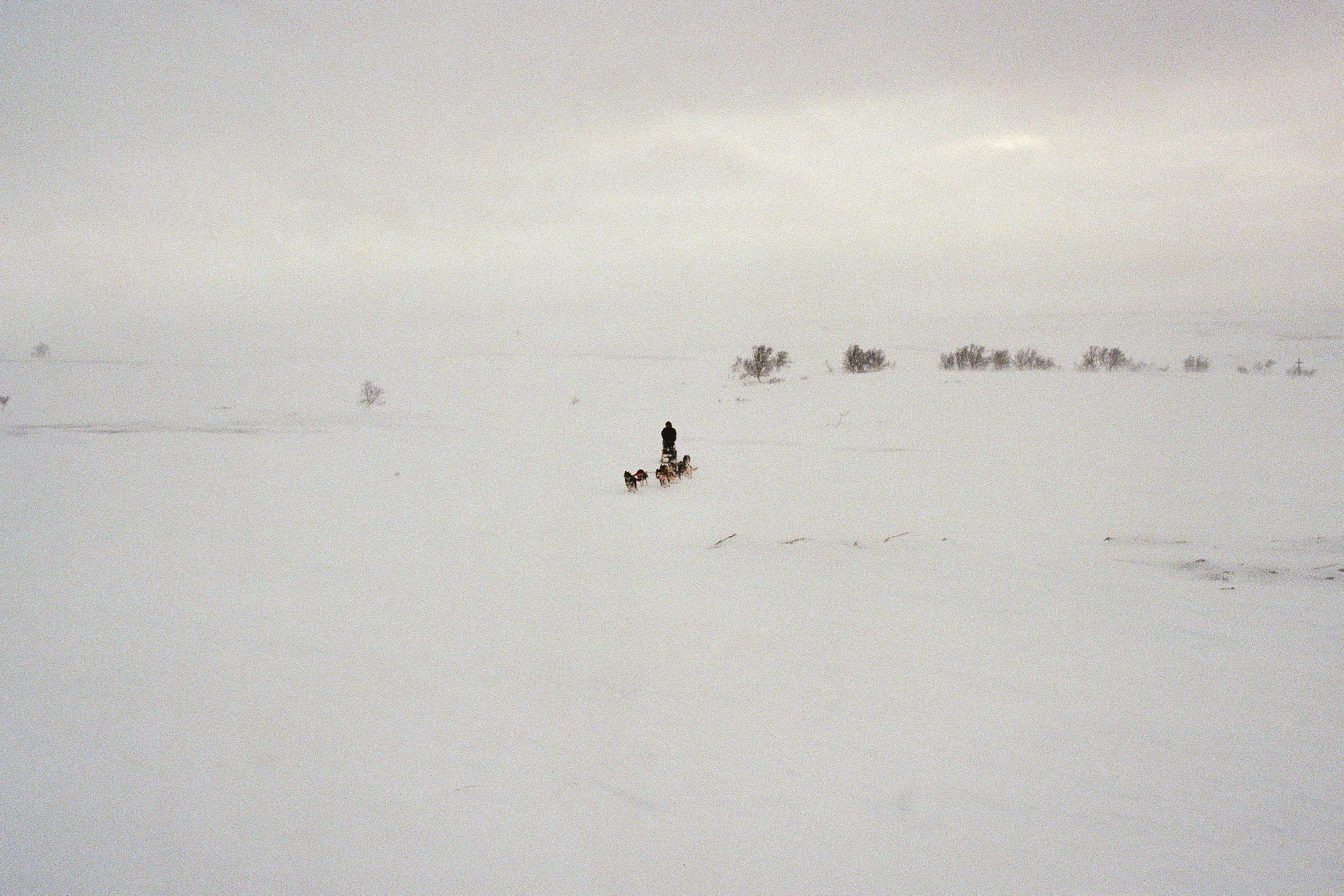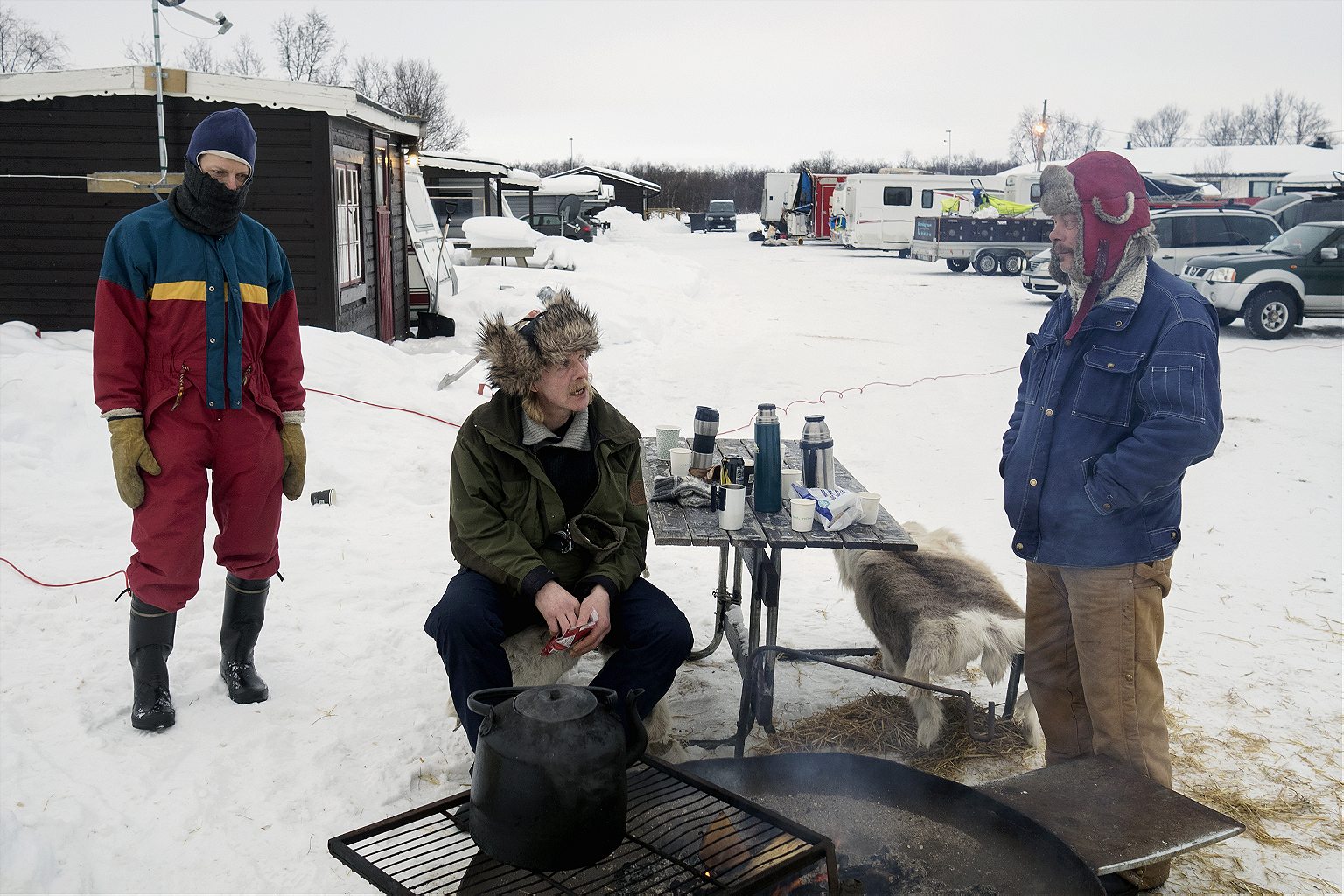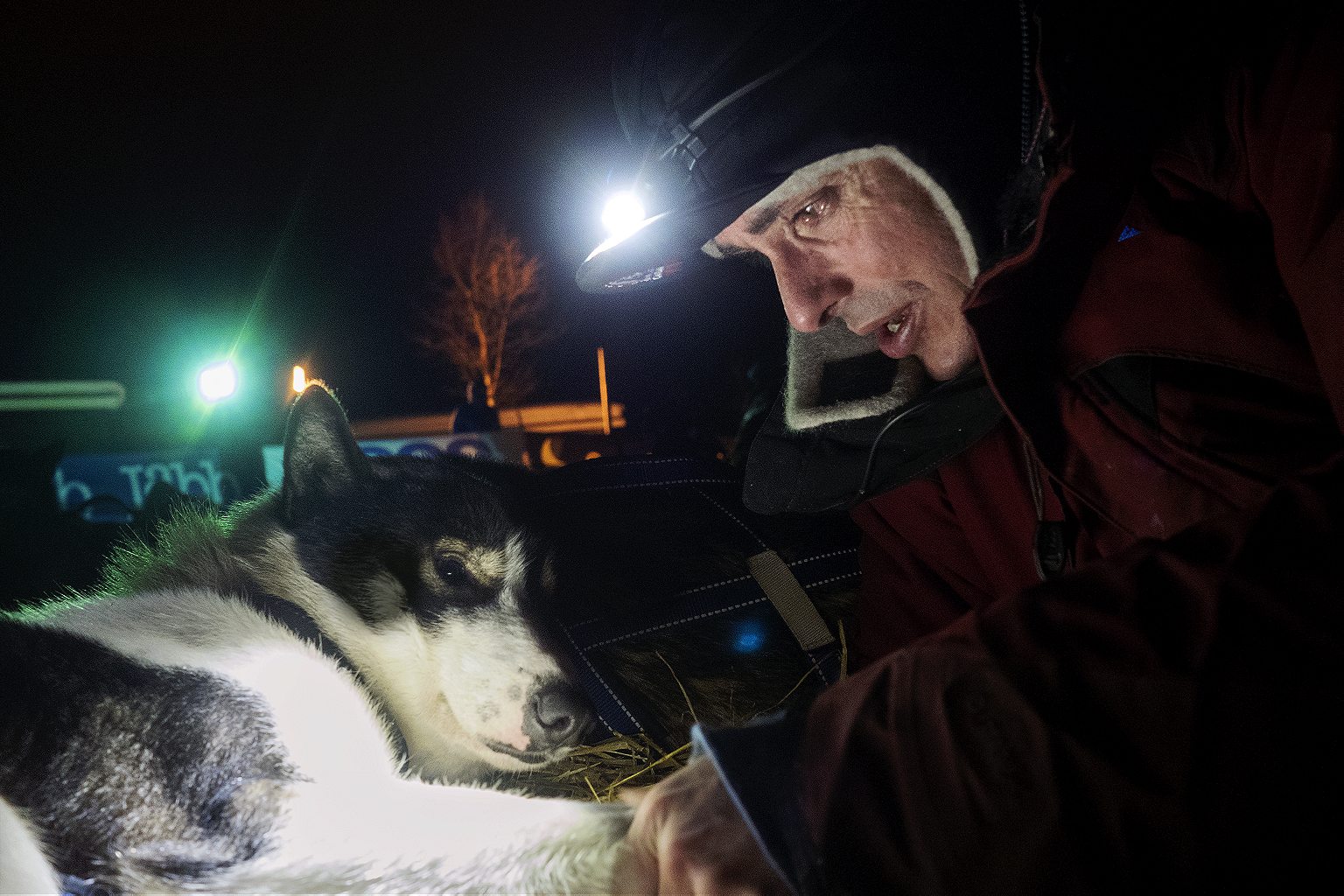Inside Europe’s longest sled dog race.
The horizon in Finnmark, Norway, is invisible when it snows. A pale, gray haze extends in all directions, obscuring the difference between land and sky. Those who choose to traverse this void cannot predict how long it will be until they eat or sleep. Many fail to complete the journey. Yet every year, at the beginning of March, people come from all over Europe to test their limits against this Arctic landscape.
This competition is the Finnmarkslopet dog sled race, the longest of its kind in Europe. Held in the part of Norway that lies inside the Arctic Circle, it stretches over 650 miles of snow and ice.
The trail begins in the small municipality of Alta, then cuts across the Finnmark plains to the peninsula town of Kirkenes, then loops back to end in Alta. Mushers have checkpoints in between to recharge for a strenuous five to seven days in the winter chill, which averages 16 degrees Fahrenheit.




The Finnmarkslopet race was established in the early 1980s, a decade after the sport was popularized in America, as a way for European mushers to test their dogs before taking them half-way across the world to run the Iditarod in Alaska, the world’s longest dog sled race.
According to Trond Anton Andersen, the director of Finnmarkslopet, between 2,000 and 3,000 spectators came out to Alta to see the start of the race last year. Once the mushers set off, they are alone in the wilderness. Their only contact with the rest of the world are the checkpoints, located roughly every 30 miles, where they allow their dogs to rest. There, they prepare a warm hay nest, feed them, and cover them in order to keep their muscles warm while they sleep.



Lodgings for humans at each checkpoint range from heated cabins to yurts lined with reindeer skin. On the first night of the race, racers are required to stop for 16 hours to eat and sleep in the village of Skoganvarre. After that, when and where they decide to rest is a matter of strategy.
In the city of Kirkenes, crowds gather for a concert held to celebrate the mushers as they enter the second leg of the race. This is the hardest part as the dogs start to tire out. Each musher begins with 14 dogs, but can continue to race with as few as six. Last year, the first three mushers crossed the finish line on the seventh day of the race, while the last of the mushers took eight days to finish. Fourteen teams dropped out.
The entrants for this year’s Finnmarkslopet race consists of 67 rookies and 61 veterans. Among those returning is Petter Jahnsen, who placed 12th in last year’s race. Yet despite his success, the 50-year-old Norwegian electrician mushes for leisure only. “I don’t want to transform it into a profession, because that would spoil the fun,” he says. “Mushing for me has to be a hobby.”
Melissa Guerrero contributed to this article.